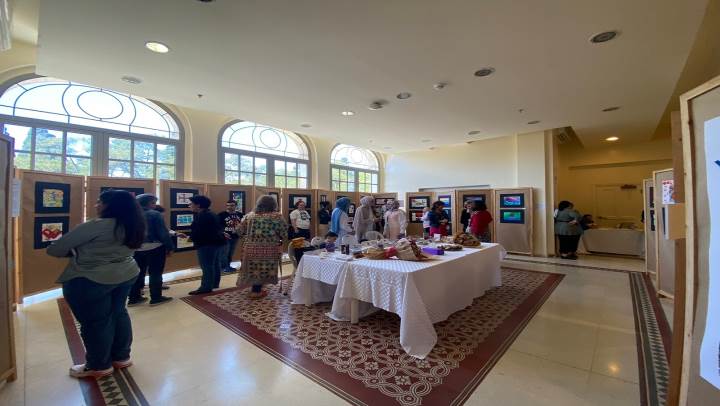
This article highlights an art therapy program at the American University of Beirut, within the “Next Step” initiative. The program’s primary aim is to create a non-judgmental, safe space for students with special needs, such as Down syndrome, intellectual delays, or autism, to express themselves through art without the pressure of creating a perfect piece. Instead, the focus is on self-discovery and expression using colors and shapes.
Art therapist Caroline Dagher describes how this exhibition, titled “Voice Your Colors,” allows these young individuals to broaden their horizons and boost their self-confidence. The artwork, created over the academic year, sometimes clearly depicts their experiences or past events. While some students can verbally explain their artwork, others use body language or expressions that may not be clear to others but are meaningful to them.
The paintings narrate personal experiences of the students. For example, Mohammad describes his artwork titled “Sadness,” reflecting his grief over his father’s death, while Abdul Karim depicts a car accident his family recently experienced. Another student, Omar, fills his drawings with vibrant colors, expressing his love for nature and the joy of spring.
Parents of these students expressed pride in their children’s achievements. The program has not only provided a platform for these young artists to showcase their talents but has also significantly boosted their self-confidence and independence.
Additionally, the article emphasizes the importance of art therapy in mental health, noting the preference of students for these creative classes over traditional academic ones. The American University of Beirut prioritizes students’ psychological well-being alongside their academic education.
In conclusion, the article sheds light on the positive impact of art therapy on the students’ emotional expression and independence, reflecting the university’s commitment to exploring and nurturing their students’ potential through artistic endeavors.
Visit the full article:
0 Comment

Leave a Reply